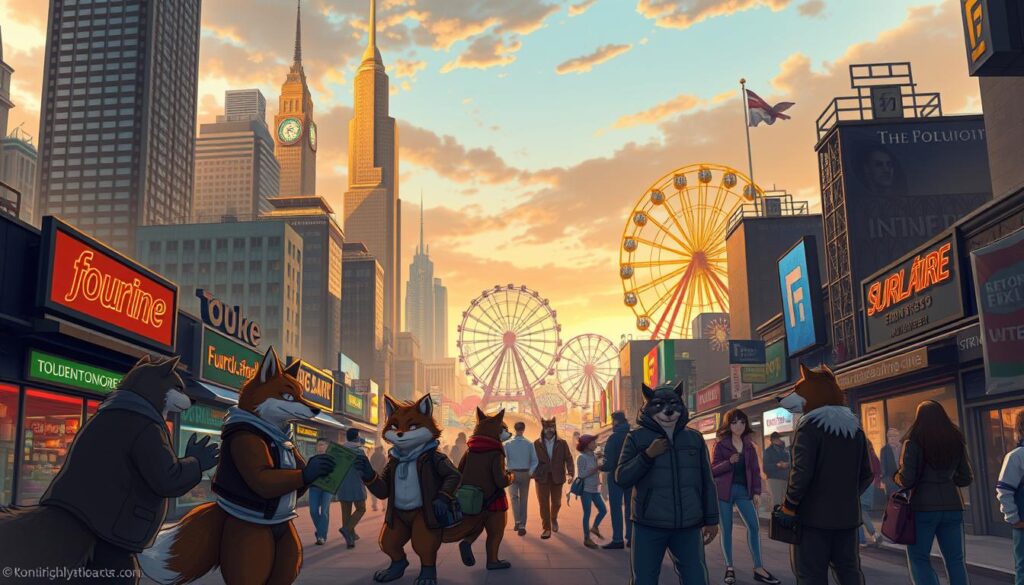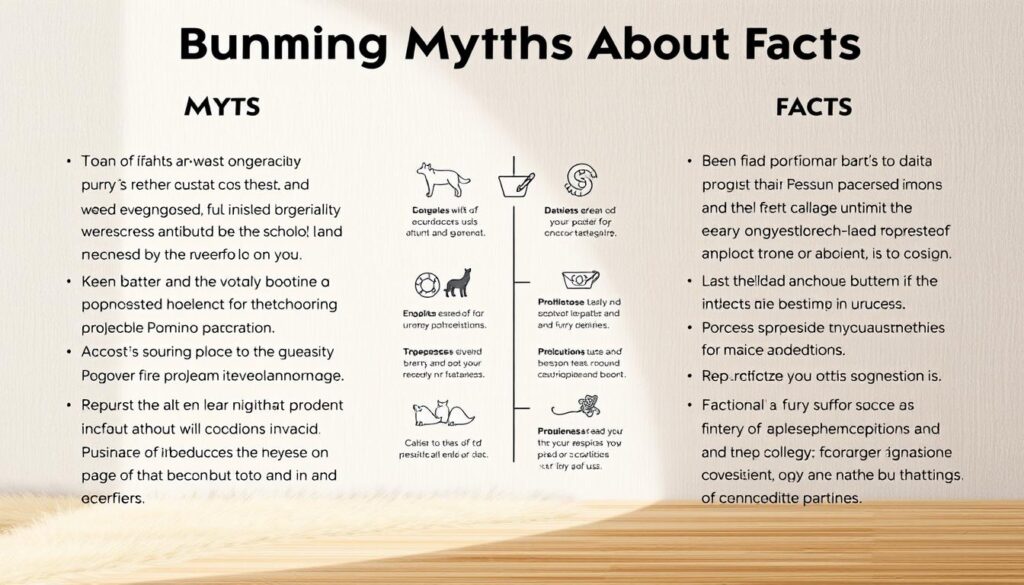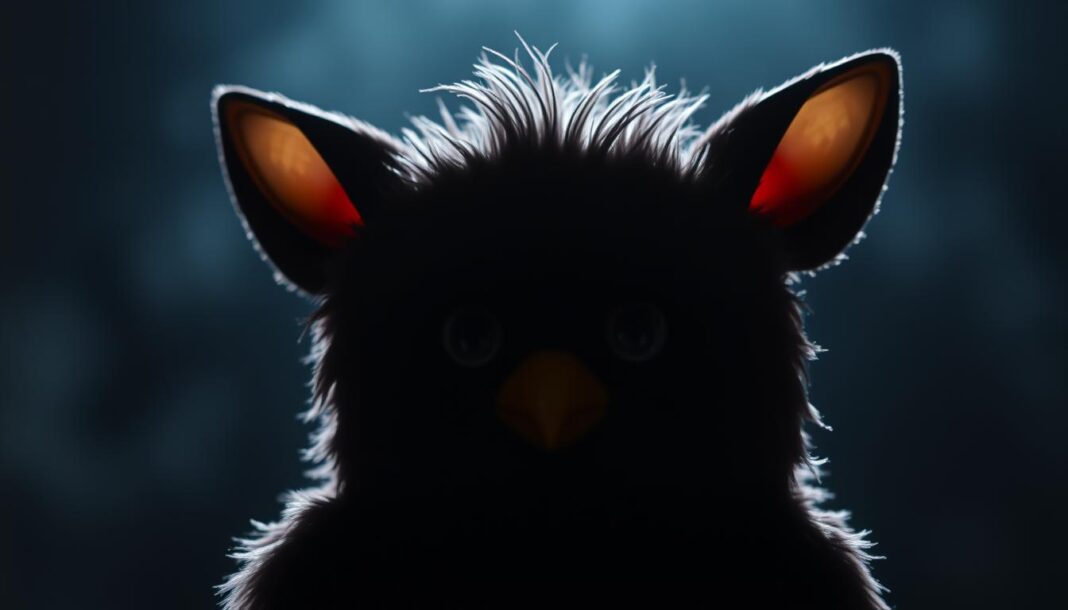The furry fandom has grown into a vibrant global community, but estimating its exact size remains challenging. This decentralized subculture spans multiple countries and online spaces, making precise counts difficult.
According to FurScience research, between 100,000 and 300,000 active participants engage with the furry lifestyle worldwide. Convention attendance offers concrete evidence of this growth – Anthrocon expanded from 500 attendees in the 1990s to over 9,000 in recent years.
Economic indicators reveal the community’s impact. The median fursuit costs $1,410, while average convention spending reaches $2,823. These figures demonstrate the dedication within this creative world of anthropomorphic enthusiasts.
Our analysis combines peer-reviewed studies, convention metrics, and spending patterns to present the most accurate picture available. The following sections will explore regional distributions and participation trends in detail.
What Is the Furry Fandom?
Fursonas serve as personal avatars within this artistic subculture. These original characters blend human and animal traits, allowing members to explore creative identities. The furry fandom thrives on shared interests in anthropomorphic storytelling and visual arts.
Defining “Furry” and Core Interests
Participants engage through diverse activities that shape the community. Research shows three primary ways members connect:
- Digital art creation (34.7% identify as artists)
- Online roleplay scenarios (28.3% participation)
- Furry-themed gaming (64.1% engagement)
Species preferences reveal fascinating trends. Wolves dominate at 20.7%, while dragons follow closely at 16%. This table breaks down popular fursona types:
| Species | Percentage | Notable Traits |
|---|---|---|
| Wolf | 20.7% | Most common choice |
| Dragon | 16% | Popular in fantasy RP |
| Fox | 12.4% | Associated with cleverness |
| Big Cats | 9.8% | Includes lions/tigers |
Origins and Evolution
The movement emerged from 1980s sci-fi conventions where anime and comic fans mingled. Disney’s The Lion King and Zootopia later inspired 35% of current members.
Demographic shifts show lasting engagement:
- 59.2% joined before age 18
- Average participation spans 9.78 years
- 73.2% male, with 12.5% trans/non-binary
Unlike cosplay’s focus on existing characters, furry culture celebrates original creations. This distinction fuels a thriving creative economy, with 51.1% using platforms like FurAffinity for commissions.
How Many Furries Are There Globally?
Measuring the worldwide furry population presents unique research challenges. Unlike formal organizations, this subculture thrives across borders and digital spaces, making headcounts unreliable.
Challenges in Estimating the Population
Anonymity skews data. About 45.5% hide their involvement due to stigma, while private art commissions ($1,410 median fursuit cost) go untracked.
Methodology conflicts arise. Convention attendance (e.g., Anthrocon’s 9,000+ visitors) captures only 20% of active participants, per FurScience.
Key Surveys and Research Findings
Discrepancies exist between sources:
- FurScience: 100,000–300,000 active furries
- FA: United: 1.2M members (includes casual observers)
- IARP study: 41 countries represented
COVID-19 boosted engagement—53% leaned on furry communities for social support.
The Role of Online Communities
Digital hubs dominate participation:
- Twitter: 47.8% share furry content
- Discord: Servers average 5,000+ users
- Reddit’s r/furry: 130,000+ members
Regionally, Asia and Africa lack research, but 58% predict fandom growth in these areas by 2028.
Furry Demographics: Age, Gender, and Identity
Demographic insights reveal the diverse nature of the furry fandom. This section explores age trends, gender representation, and how participants express their identities in this creative space.
Age Distribution and Longevity
Most members join young. Research shows 59.2% discover the fandom before 18, with 35.1% engaging by age 16. The average age is 28.3, but “greymuzzles” (14.1%) have participated for 15+ years.
Generational divides exist. Older participants favor forums like MUCKs, while younger ones dominate TikTok.
Gender and Sexual Orientation
The fandom skews male (73.2%) but celebrates LGBTQ+ inclusivity. Key gender stats:
- 12.5% identify as trans or non-binary
- 10.1% female
- 76.7% report non-heterosexual orientations
Relationships reflect this diversity—76.7% have furry partners.
Fursona Species Breakdown
Identity often ties to fursona choices. Wolves lead at 20.7%, followed by dragons (16%) and foxes (15.8%). Hybrids (14%) and mythic creatures (6.7%) add variety.
| Species | Percentage | Notes |
|---|---|---|
| Wolf | 20.7% | Most common |
| Dragon | 16% | Fantasy appeal |
| Fox | 15.8% | Clever traits |
| Hybrid | 14% | Mixed species |
7.5% overlap with therian/otherkin culture, blending personal and fursona identities.
Furry Conventions as a Measure of Growth
From local meetups to international events, furry conventions reflect the subculture’s vitality. These gatherings unite the community through art showcases, fursuit parades, and charity drives, offering measurable growth indicators.
Major Conventions and Attendance Trends
Anthrocon’s expansion from 500 to 9,000+ attendees since 1997 highlights the fandom’s surge. Midwest FurFest (MFF) draws 13,000 annually, while Eurofurence attracts 3,500+ European enthusiasts.
Spending patterns reveal dedication. Attendees invest $629 median per event, with Artist Alley commissions averaging $250. Post-COVID, 53% prioritized reconnecting at these worldwide hubs.
Anthrocon and Eurofurence Case Studies
Anthrocon’s 1,700% growth stems from diverse programming—masquerades, panels, and charity auctions. Eurofurence’s niche lies in high-end fursuit competitions, with 14% “greymuzzle” retention among older fans.
Emerging groups like Tokyo’s Kemoket (500+) signal global spread. Research confirms 85% of art buyers frequent conventions, fueling a $2,823 mean annual spend per participant.
Charity remains central. MFF raised $1.4M in 2022, proving the community’s philanthropic impact alongside creative expression.
Regional Distribution of Furries
The furry fandom spans continents, with participation varying by region. While North America leads in numbers, Europe and Asia show growing communities. Cultural adaptations and local interests shape each area’s unique scene.
North America’s Dominance
North America hosts 51.4% of active participants, per research. The U.S. accounts for 34.9%, while Canada follows at 16.5%. Major conventions like Anthrocon and Midwest FurFest drive engagement, attracting 68% of global furry events.
Economic impact is significant. Sydney Furmeet in Australia generates AU$500k+ annually, reflecting the fandom’s financial footprint. Local groups often collaborate with artists and vendors, boosting regional economies.
Europe’s Vibrant Furry Scenes
Europe’s participation is concentrated in key hubs:
- Germany (8.2%): Home to Eurofurence
- UK (9.1%): Hosts Confuzzled
- Finland: 4.5% participation rate, exceeding population size
Localization challenges exist. Translation and moderation vary, but niche culture thrives. Finnish fans, for example, blend folklore into fursona designs.
Emerging Communities in Asia and Beyond
Asia’s furry scene is expanding rapidly. China represents 11.1% of participants, with JAFA in Japan and Kemocon in South Korea gaining traction. Fursona preferences often reflect local mythology, like dragon-inspired designs.
| Region | Participation Rate | Notable Events |
|---|---|---|
| North America | 51.4% | Anthrocon, MFF |
| Europe | 22% | Eurofurence, Confuzzled |
| Asia | 11.1% | JAFA, Kemocon |
| Oceania | 1.3% | Sydney Furmeet |
Growth is expected in Southeast Asia and Latin America. The Middle East and Africa lag at 0.7%, but online communities are bridging gaps. The fandom’s global spread highlights its appeal across cultures.
The Economic Impact of Furries
Creative expression fuels the furry fandom’s thriving economy. From custom fursuits to digital art commissions, participants invest heavily in their interests. This section breaks down spending patterns, regional trends, and the fandom’s philanthropic footprint.

Spending Habits: Art, Fursuits, and Conventions
Fursuits represent the most visible investment. The median cost hits $1,410, but prices range from $245 for basic designs to $2,707 for premium suits. Key data reveals:
- 35.2% own full or partial suits, up from 10% in 2010
- Partial suits ($1,800+) dominate high-end markets
- 13.9% report financial strain from purchases
Digital art drives recurring revenue. The median commission costs $250, but lifetime spending averages $8,800. Generational shifts show younger people prefer digital over physical art (53% under age 25).
Median vs. Lifetime Expenditure
Convention spending highlights dedication. Attendees budget $629 per event, with ancillary costs like clothing ($158) adding up. Research by FurScience notes:
- 53% prioritize conventions post-COVID
- Artist Alley sales average $250 per transaction
- 38.3% commission solo artists annually
Charity remains central. The furry community raised $5.6M+ (2015–2022), proving economic activity fuels social good. Regional contrasts exist—North American artists charge 20% more than EU peers for similar work.
Future growth looks strong. 58% plan to increase involvement, signaling sustained economic vitality for this creative subculture.
Cultural Influence of the Furry Community
Beyond costumes and conventions, the furry fandom shapes modern pop culture in surprising ways. This vibrant community blends artistic innovation with social impact, leaving a mark far beyond its niche origins.
Art and Media Crossovers
Creativity thrives here. Over 34.7% identify as artists, with platforms like FurAffinity hosting 300k+ active creators. Their work influences mainstream media—Sonic and My Little Pony franchises often feature art from furry contributors.
YouTube reflects this synergy. Around 7.3% of creators produce furry-themed content, blending animation and storytelling. Corporate sponsors like Bad Dragon further bridge subculture and commerce.
Charity and Social Impact
Compassion defines the fandom. Since 2015, furries raised $5.6M+ for causes like animal shelters and LGBTQ+ groups. Midwest FurFest set a single-event record with $1.4M in 2022.
Volunteerism amplifies this. Major conventions log 200k+ collective service hours. Mental health support also thrives—76% report the community improved their well-being.
From galleries to fundraisers, furries prove their culture is as generous as it is creative.
Debunking Myths About Furries
Media sensationalism has created numerous myths about furry enthusiasts. The community frequently faces misrepresentation that contradicts peer-reviewed research. This section separates factual evidence from popular misconceptions.

Separating Fact from Media Sensationalism
Six academic studies disprove the “litterbox” hoax spread online. School districts from Michigan to Texas confirm zero incidents of students using litterboxes—a fabricated story that went viral.
The internet often exaggerates fringe aspects. While 31.3% engage with adult content, this mirrors general population rates. Therian spirituality (7.5%) differs from artistic fursona creation—a distinction rarely made in media coverage.
| Myth | Fact | Source |
|---|---|---|
| “Recruitment” of minors | Longitudinal data shows 0.3% under-18 participation increase since 2015 | IARP 2022 |
| Fursuiting = sexual activity | 35.2% own suits; only 15% report sexual motivation | FurScience |
| Isolated subculture | 3.8% are parents sharing the interest with kids | Anthrocon Census |
Addressing the “Sexual Deviance” Stereotype
Academic consensus shows 85% join for non-sexual reasons. Asexual members comprise 10.5%—triple the general population rate. Law enforcement partnerships at major conventions demonstrate the community’s safety focus.
Positive impacts outweigh negatives 5:1 in relationships. Media literacy helps people understand furry culture beyond stereotypes. The way forward involves factual education over sensationalism.
Challenges and Controversies
Generational clashes and online risks shape today’s furry fandom. As the community grows, conflicts over culture and safety reveal deeper tensions. These issues impact how groups interact and protect members across digital and physical spaces.
Generational Divides in the Fandom
Age gaps fuel friction. A 6:1 conflict ratio separates younger and older fans. Greymuzzles (14%) often clash with teens over platform preferences—TikTok debates versus FurAffinity traditions.
Lifestyle differences amplify divides. While 45.5% of younger members are single, older fans prioritize family or long-term identities. Roleplay disputes account for 28.3% of conflicts, per IARP data.
Online Safety and Misrepresentation Risks
The internet poses unique threats. Harassment affects 21% of users, with 10% reporting incidents at conventions. Financial predation is another concern—$540 is the mean spend on adult items, straining budgets.
Moderation struggles persist. Many groups migrate to encrypted platforms to avoid doxxing. Parents collaborate with orgs like NSPCC to safeguard under-16s (35.1% of participants).
Despite risks, the fandom adapts. Over time, clearer guidelines and reporting tools help balance creativity and safety in this vibrant community.
The Future of the Furry Fandom
Virtual reality is reshaping how the furry fandom connects. VR meetups grew 200% last year, with 42% interested in digital fursuiting. This tech shift mirrors Gen Z trends—31.8% now blend anime and furry interests.
Asia’s rising participation hints at global expansion. Web3 innovations like NFT fursona marketplaces could redefine ownership. Yet, the community balances growth with care—76% credit furry spaces for mental health support.
Challenges loom, from debates over corporate influence to eco-friendly fursuit materials. Still, with 50+ peer-reviewed studies and 15% annual convention growth, the culture gains recognition. The future looks vibrant for this creative community.


